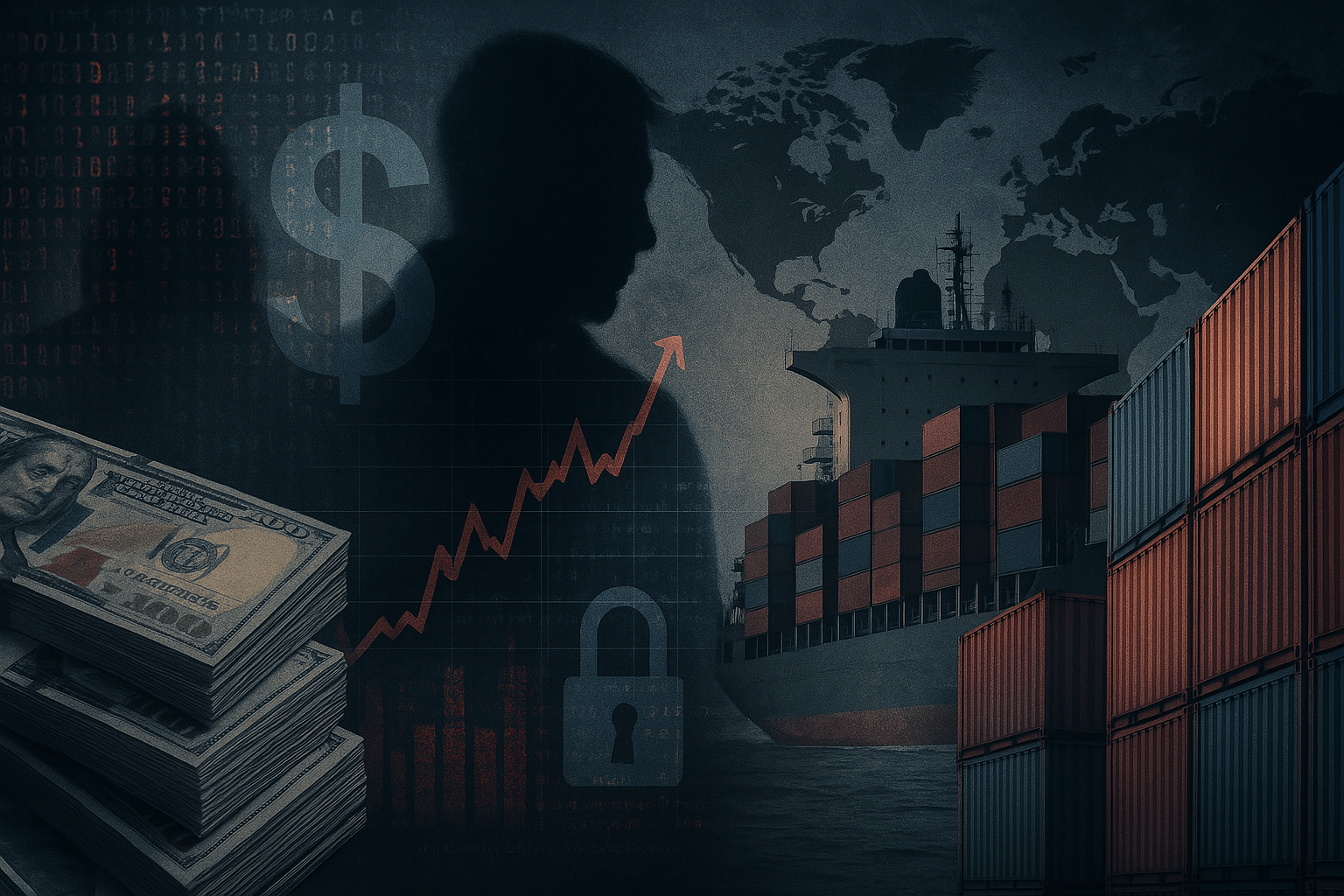Trade policy is constantly in the news, especially as the US adjusts its tariff structure in 2025. While the intent is often to protect domestic industries and promote economic growth, tariffs can have unintended consequences. One such consequence is the potential to fuel financial crime. Instead of dwelling on definitions, let’s focus on how tariffs generally create opportunities for illicit activities and then forecast the specific impacts of the 2025 US tariffs on AML/CTF efforts.
Tariffs and Financial Crime: An Unintended Alliance
At their core, tariffs increase the cost of importing goods. This creates a direct incentive for businesses to find ways to avoid paying these duties. Some may choose to absorb the cost, while others may seek legitimate alternatives. However, the temptation to evade tariffs through illicit means becomes much stronger for some, particularly when margins are tight or competition is fierce. It isn’t that tariffs, per se, create opportunities for financial crimes such as money laundering. Rather, tariffs expand the criminal financial landscape. They make it more attractive for criminals to commit money laundering to, or in addition to, tariff evasion.
Here’s how tariffs create a breeding ground for financial crime:
- Increased Incentive for Trade-Based Money Laundering (TBML): TBML involves disguising criminal proceeds through trade transactions. Higher tariffs make TBML even more attractive. Criminals can evade taxes while laundering money, effectively getting two illicit benefits for the price of one.
- More Complex Supply Chains: Tariffs often lead businesses to seek alternative suppliers in countries with lower duties or less stringent regulations. This creates more complex and opaque supply chains. This increased complexity provides cover for criminals to hide illicit transactions and move money undetected.
- Exploitation of Customs Loopholes: Higher tariffs drive businesses to exploit customs loopholes and engage in practices like mislabeling goods or under-invoicing. These tactics, while aimed at tariff evasion, also serve as effective methods for money laundering.
- Rise in Informal Value Transfer Systems: Tariffs can make formal trade channels more expensive, pushing businesses to rely on informal value transfer systems like Hawala. These systems are harder to monitor and can be exploited for both money laundering and terrorist financing.
In essence, tariffs create a ripple effect that increases the vulnerability of the global financial system to illicit activities.

2025 US Tariffs: A Forecast for AML/CTF
The 2025 US tariffs are likely to have a significant impact on AML/CTF efforts, creating new challenges and requiring adjustments to existing strategies.
Here’s a forecast of how the 2025 US tariffs will affect AML/CTF operations:
- Increased TBML Activity: The most direct impact will be an increase in TBML schemes targeting US trade. Businesses seeking to avoid the tariffs will likely engage in practices like under-invoicing, mislabeling, and phantom shipments, making it harder for financial institutions to detect illicit flows. This will require enhanced transaction monitoring and greater scrutiny of trade finance activities.
- Shift in Trade Patterns: The tariffs will likely lead to a shift in US trade patterns, with businesses seeking alternative suppliers in countries with lower tariffs or free trade agreements. This could create new vulnerabilities in regions with weaker AML/CTF regulations, requiring increased due diligence on transactions involving these countries.
- Greater Demand for Hawala and Other Informal Systems: As formal trade channels become more expensive, some businesses may turn to informal value transfer systems like Hawala to avoid tariffs. This will make it harder to track the flow of funds and could increase the risk of terrorist financing.
- Increased Pressure on Customs and Border Protection (CBP): The tariffs will place additional pressure on CBP to detect and prevent tariff evasion. This will require increased resources, enhanced training, and better technology to identify fraudulent practices. It will also necessitate closer cooperation between CBP and financial institutions to share information and coordinate enforcement efforts.
- Heightened Scrutiny on Correspondent Banking Relationships: US banks providing correspondent banking services to foreign institutions in countries affected by the tariffs will face increased scrutiny. They will need to enhance their due diligence on these relationships to ensure they are not being used to facilitate TBML or other illicit activities.
- Need for Enhanced Data Analytics: The complex and dynamic nature of the trade landscape after the implementation of the 2025 US tariffs will require more sophisticated data analytics capabilities. Financial institutions and regulatory agencies will need to leverage advanced technologies like artificial intelligence and machine learning to identify patterns and anomalies indicative of TBML.
- Challenges in Identifying Beneficial Ownership: TBML often involves complex corporate structures designed to obscure the true beneficial owners of companies involved in trade transactions. The 2025 US tariffs will likely exacerbate this challenge, making it harder for financial institutions to comply with KYC requirements and identify those ultimately profiting from illicit activities.
Here’s a specific scenario:
Imagine a US company importing textiles from Asia. The 2025 tariffs significantly increase the cost of these imports. To avoid paying the full tariffs, the company colludes with a supplier to under-invoice the shipments and mislabel the goods as “cotton rags.”
This not only evades the tariffs but also allows the company to launder money by receiving the true value of the goods through an offshore account. The US company’s bank, already struggling to keep up with the increased volume of trade transactions, fails to detect the suspicious activity.
This scenario illustrates the challenges that financial institutions will face in the wake of the 2025 US tariffs. It highlights the need for enhanced transaction monitoring, improved data analytics, and greater cooperation between the public and private sectors to combat TBML.
Responding to the Challenge
To effectively address the challenges posed by the 2025 US tariffs, a multi-pronged approach is needed:
- Strengthened AML/CTF Regulations: Regulators need to enhance AML/CTF regulations to specifically address the risks associated with TBML in a high-tariff environment. This could include stricter requirements for verifying trade documentation, enhanced due diligence on high-risk trade transactions, and greater emphasis on identifying beneficial ownership.
- Increased Collaboration: Greater collaboration between financial institutions, law enforcement agencies, and regulatory bodies is essential. This includes sharing information, coordinating investigations, and developing joint strategies to combat TBML.
- Technological Innovation: Financial institutions need to invest in technological innovation to enhance their AML/CTF capabilities. This includes adopting advanced data analytics tools, artificial intelligence, and machine learning to identify suspicious patterns and anomalies.
- Training and Awareness: AML/CTF professionals need to be trained on the specific risks associated with TBML and the techniques used by criminals to evade tariffs. Increased awareness among businesses and the public is also crucial.
The 2025 US tariffs are likely to create new opportunities for financial crime. By understanding these risks and taking proactive steps to address them, the US can protect its financial system and maintain its commitment to fighting money laundering and terrorist financing. It will also be necessary to monitor the tariffs effects in real time, and to adapt relevant policy to the changed reality.

